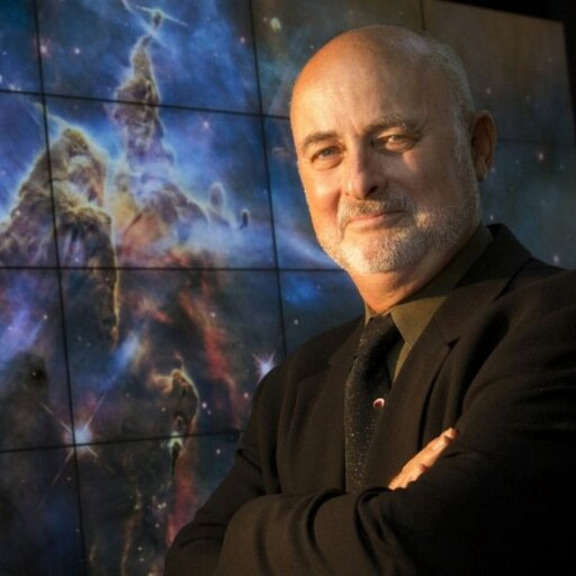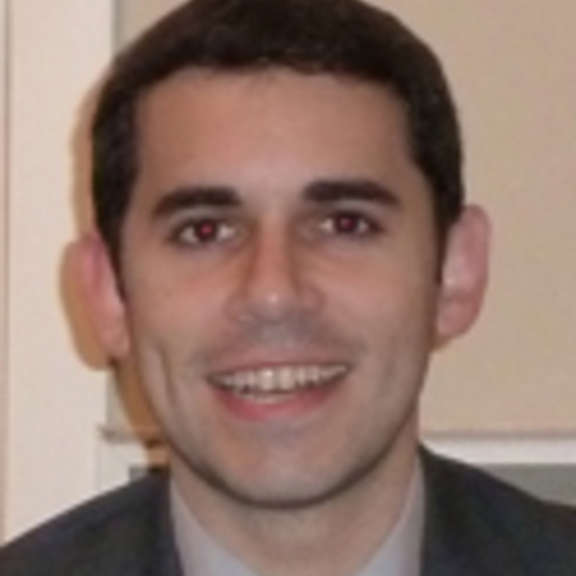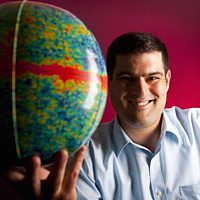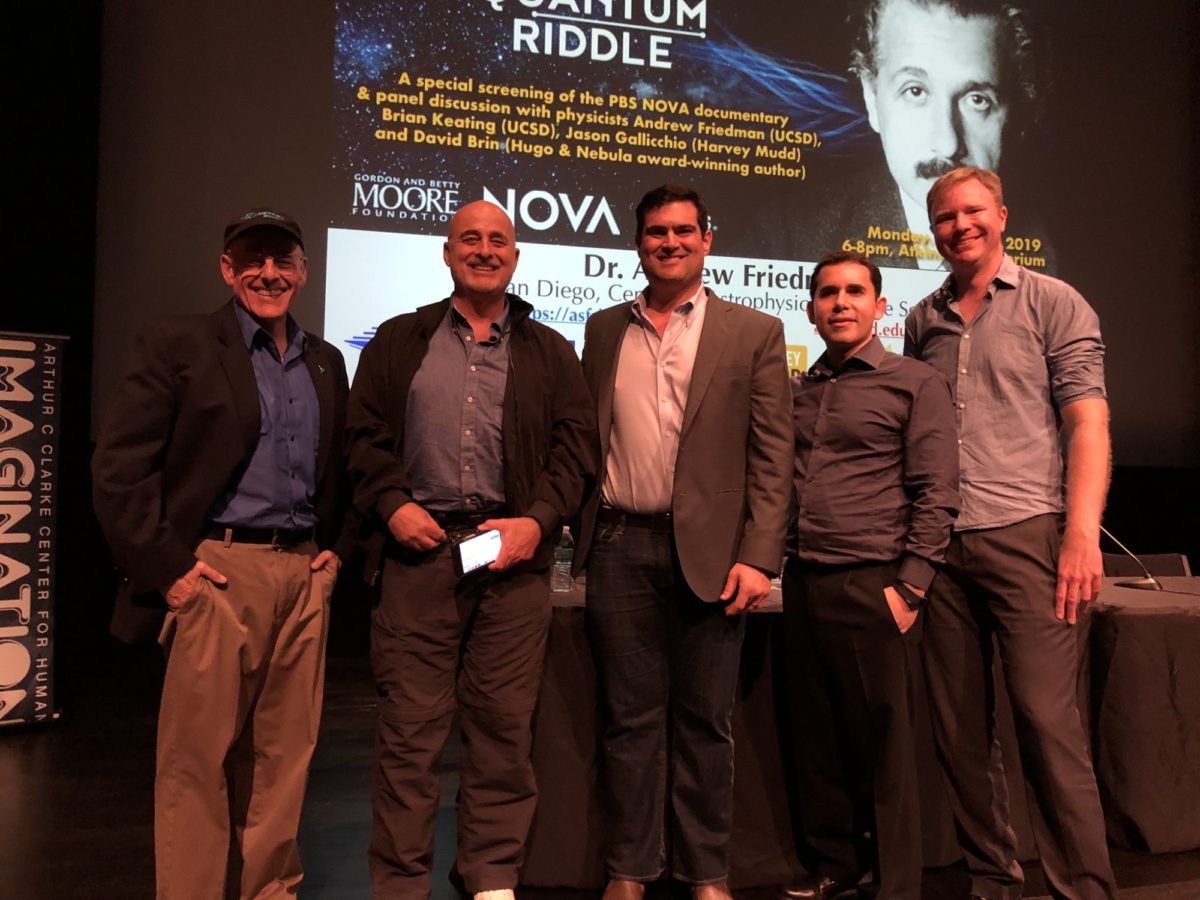Planetary Radio • Jun 12, 2019
Quasars and Quanta: Exploring Einstein’s Quantum Riddle
On This Episode

David Brin
Science Fiction Author, Futurist, Astrophysicist, and Planetary Society Advisory Council member

Andrew Friedman
Assistant Research Scientist for UC San Diego Center for Astrophysics & Space Sciences (CASS)

Jason Gallicchio
Professor of Physics for Harvey Mudd College

Brian Keating
Experimental Astrophysicist, UC San Diego Center for Astrophysics & Space Sciences (CASS) and Associate Director for Arthur C. Clarke Center for Human Imagination

Bruce Betts
Chief Scientist / LightSail Program Manager for The Planetary Society

Mat Kaplan
Senior Communications Adviser and former Host of Planetary Radio for The Planetary Society
Even though his own work led to it, Albert Einstein never cared for quantum mechanics concepts like entanglement, which he called “spooky action at a distance.” While there’s no doubt it is real, could something even more mysterious be hiding under it? We’ll talk with three eminent physicists and physicist/science fiction author David Brin about the Nova documentary on this subject. Planetary Society Chief Advocate Casey Dreier analyzes President Donald Trump’s recent tweet about the Moon and Mars, and Senior Editor Emily Lakdawalla introduces a new edition of The Planetary Report, now available to all.

- 2019 June Solstice issue of The Planetary Report
- Arthur C. Clarke Center for Human Imagination
- Einstein’s Quantum Riddle
- David Brin
- Andrew Friedman
- Jason Gallicchio
- TASAT (There’s A Story About That): The What-If Scenarios Database from the Clarke Center
- Planetary Radio Space Policy Edition: The Soviet Moonshot
This week's prizes:
A priceless Planetary Society KickAsteroid rubber asteroid, a 200-point iTelescope.net astronomy account AND The Space Race by Sarah Cruddas, a beautifully-illustrated book for young people about human space exploration and more.
This week's question:
Where in the solar system is a feature named Dogana?
To submit your answer:
Complete the contest entry form at http://planetary.org/radiocontest or write to us at [email protected] no later than Wednesday, June 19th at 8am Pacific Time. Be sure to include your name and mailing address.
Last week's question:
What is the alloy that the LightSail 2 booms are made of? These long booms pull the sections of the solar sail out of the body of the spacecraft.
Answer:
The answer will be revealed next week.
Question from the May 30 space trivia contest:
What is the brightest pulsar as seen from Earth at radio wavelengths?
Answer:
The brightest pulsar in the sky as seen from Earth at radio wavelengths is Vela.


 Explore Worlds
Explore Worlds Find Life
Find Life Defend Earth
Defend Earth



